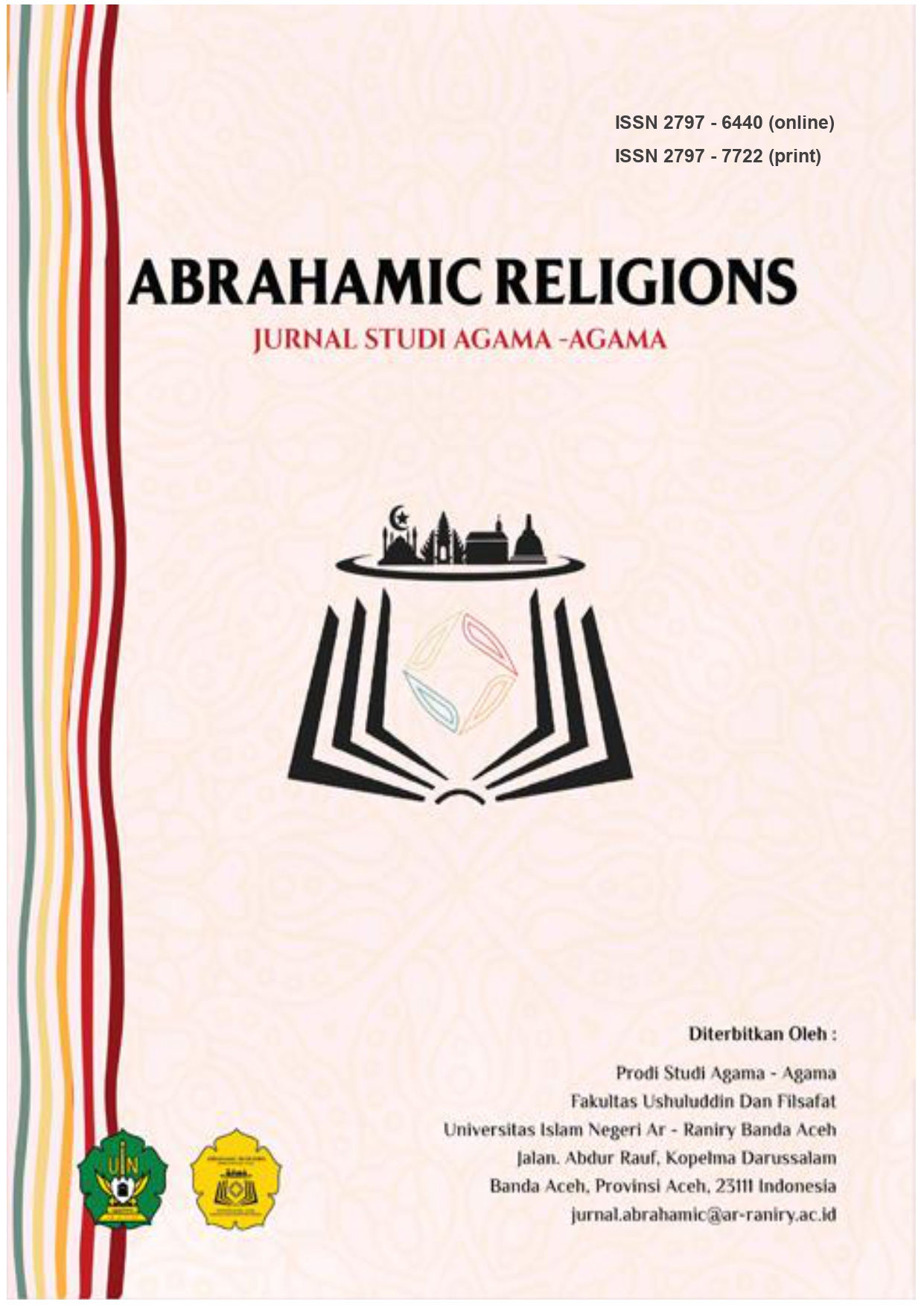ALIRAN-ALIRAN DALAM AGAMA YAHUDI
DOI:
https://doi.org/10.22373/arj.v2i1.12133Keywords:
Agama, Aliran, YahudiAbstract
Judaism is a part of the Abrahamic religion. Abrahamic religions in their development, such as Judaism experienced divisions, giving rise to new schools of Judaism. New schools of Judaism emerged due to differences in views and opinions among the Jews. This study aims to determine the definition of sects in Judaism along with the emergence factors of each sect in Judaism. Some of the schools in Judaism are beginning with Enlightenment Judaism, Reform Judaism, Orthodox Judaism, Conservative Judaism, and Reconstructionist Judaism. Apart from these sects, Judaism is further divided into several sects, including the paris, saduki, readers, writers, essenes, and fanatics or zealots. Among the schools in Judaism, not only differ in terms of background but also in terms of understanding of the teachings in Judaism. Therefore, it is undeniable that there are differences in religious understanding and practice in Judaism in each sect. This study uses a descriptive method through a qualitative approach with literature study. The result of the discussion in this study is to know the definitions, factors, and schools of Judaism. And this study concludes that the Jewish religion in its development has various kinds of flow
References
Achmadi, A. & N. (2011). Teori Metodologi Penelitian. Teori Metodologi Penelitian, 1–21.
Aurbach, S. (1994). Encyclopedia of Multiculturalism: Daniel Ken Inouye-Mythology, American Indian. Marshall Cavendish.
Darmalaksana, W. (2020). Sitasi Ilmiah Menggunakan Perangkat References pada Microsoft Word. Jurnal Kelas Menulis UIN Sunan Gunung Djati Bandung, 1.
Deming, W. (2015). Understanding the Religions of the World. WILEY Blackwill.
Fathurrohman, M. (2012). Agama Yahudi (Sebuah Kajian Perbandingan Agama).
Fuaddah, M. N. (2021). Melonjak Hingga Tembus 15,2 Juta Jiwa, ini Sebaran Populasi Yahudi di Seluruh Dunia. Intisari.
Gordis, R. (2007). “Torah MiSinai: Conservative Views”. A Modern Approach to a Living Halachah. Masorty World.
Ilim Abdul Halim. (2017). Agama Yahudi Sebagai Fakta Sejarah dan Sosial Keagamaan. Religious: Jurnal Agama Dan Lintas Budaya, 2(2), 135–146.
Ismail, R. (2016). Hakikat Monoteisme Islam (Kajian Atas Konsep Tauhid “Laa Ilaaha Illallah”). Religi Jurnal Studi Agama-Agama, 10(2), 172. https://doi.org/10.14421/rejusta.2014.1002-03
J, E. D., & Geffen, R. M. (2000). The Conservative Movement in Judaism: Dilemmas and Opportunities. SUNY Press.
Jayanti, W. (2019). Yudaisme Konservatif. Universitas Sebelas Maret.
Karman, Y. (2019). Abraham Inklusif: Sebuah Titik Temu Trialog Agama-agama Abrahamik. Jurnal Jaffray.
Kusumastuti, A., & A. M. K. (2019). Metode Penelitian Kualitatif. 1–14.
Nashrullah, N. (2021). Anti-Semit Jadi Propaganda dan Mengapa Hanya Identik Yahudi? Republika.
Ningsih, W. L. (2021). Holocaust, Pembantaian Jutaan Yahudi Oleh Hitler. Kompas.
Pratama, M. E. G. (2017). Aliran-Aliran dalam Agama Yahudi.
Prothero, S. (2010). God Is Not One. HarperCollins e-books.
Samsuri, S. (2016). Yahudi dalam Zionisme dan Israel. Millah: Jurnal Studi Agama, 3(2), 289–302.
Samuel, F. G. (2015). Strains Grow Between Israel and Many Jews in the U.S. The New York Times.
Ulinnuha, R. (2016). Yahudi Dalam Sudut Pandang Filosofis Studi Agama: Kontra Zionisme dan Kontribusi Kelompok Naturei Karta Pada Klausul Perdamaian. Religi Jurnal Studi Agama-Agama, 11(1), 1. https://doi.org/10.14421/rejusta.2015.1101-01
UMM, H. (2021). Tindakan Anti-Semitisme Meningkat di Perancis. HMJ HI UMM.
Wirachmi, A. (2021). Ragam Sekte Yahudi, Nomor 1 Paling Taat di Israel. International Sindo News.
Zaluchu, S. E. (2020). Di dalam Penelitian Agama. Jurnal, 4, 28–38.
Downloads
Published
Issue
Section
License
Authors who publish in this Journal agree to the following terms:
- Authors retain copyright and grant the journal right of first publication with the work simultaneously licensed under Attribution-ShareAlike 4.0 International (CC BY-SA 4.0) allows others to share the work with an acknowledgment of the work's authorship and initial publication in this journal.
- Authors are able to enter into separate, additional contractual arrangements for the non-exclusive distribution of the journal's published version of the work (e.g., post it to an institutional repository or publish it in a book), with an acknowledgment of its initial publication in this journal.
- Authors are permitted and encouraged to post their work online (e.g., in institutional repositories or on their website) prior to and during the submission process, as it can lead to productive exchanges, as well as earlier and greater citation of published work. (See The Effect of Open Acces)















